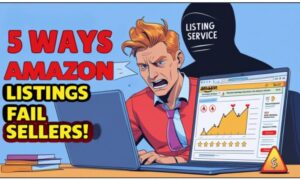SalesDuo advocates for the Hybrid model on Amazon — where brands use Vendor Central and Seller Central, depending on which platform suits a SKU more or transitioning from Vendor Central to Seller Central completely. The Hybrid Model is nothing but a combination of Vendor and Seller Central. I have listed the most common problems our customers face and why we recommend the hybrid Model.
Cost Increases and Agreements – Cost increases on Vendor Central are one of the most common problems faced by our customers. The margin becomes much thinner with the rise in MDF (CoOp) agreements.
- Due to the diminishing profitability, we review your current cost and deduct the agreements to identify the net through Vendor Central and compare that against the potential profit that you get out of seller central at an item level and recommend if the item can be moved or not and what channel we recommend for your product. In most cases, you will realize that your margins on Seller Central would be more than what you make via Vendor Central.
Amazon Purchase Order Model — Amazon only orders items that have high glance views, purchase rate, and good profitability for Amazon. This makes launching new products on Vendor Central difficult, and sometimes Amazon doesn’t accept items through the Born 2 Run Program.
MAP Adherence — If MAP adherence is a priority, Seller Central will work much better than Vendor Central.
Chargebacks – Amazon has a stringent process when it comes to adhering to the standard procedures outlined by Amazon during various stages, right from order acceptance, packaging, adhering to the timelines, and receiving process. This will further cut your margin if your internal process is not time bound/effective.
- In Seller Central, the most common chargeback is when you send an oversized or overweight Carton. You can avoid all other chargebacks related to the late shipment (Only in FBA) and packaging, especially the requirement of Ships in Own Container (SIOC) requirement for large items.
Shortage Claims – One of the most common problems on Vendor Central is the % of shortages that Amazon claims for your shipment. There is a process to dispute; however, the direction in which you can approach the disagreement is only theoretical. There is no way we can practically say that X units were sent to Amazon unless we take a video.
- In Seller Central, the % of shortages claimed by Amazon is relatively low. We always wondered how the receiving process for Seller Central shipments is more effective than the vendor Central orders.
The above factors determine which items should continue through Vendor Central and which should go through Seller Central. Once identified, selling the items through Seller Central can be a good starting point. The Amazon purge does not mean disaster. You’ll be set up for success by carefully considering your 1P and 3P plans and preparing for the ripple effects of change.
Navigating your e-commerce business through Amazon’s ever-changing business model can seem daunting. But companies like SalesDuo help businesses succeed by providing insightful advice on improving their presence through account management, operations, creative services, and finance. Please visit www.salesduo.com for additional details.



































